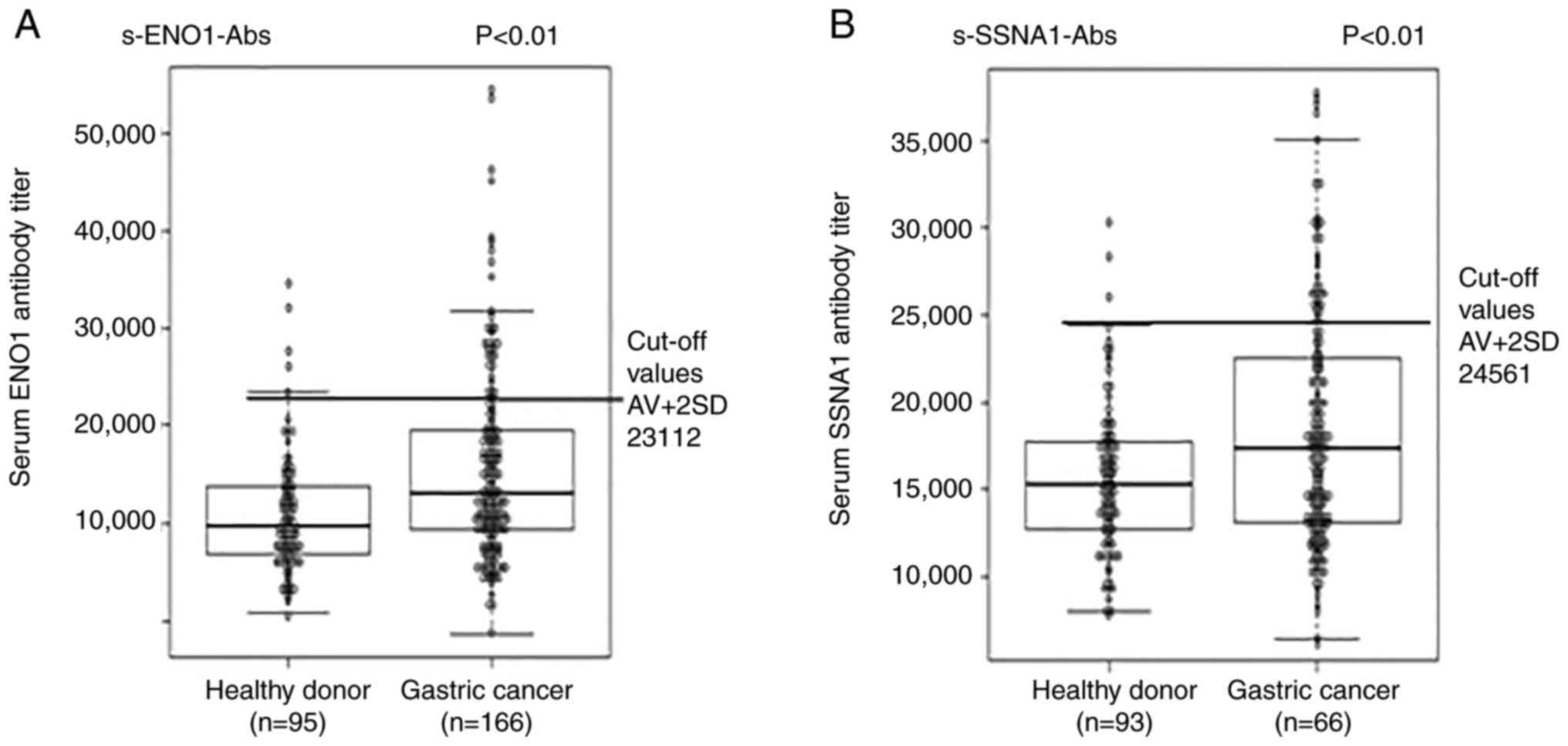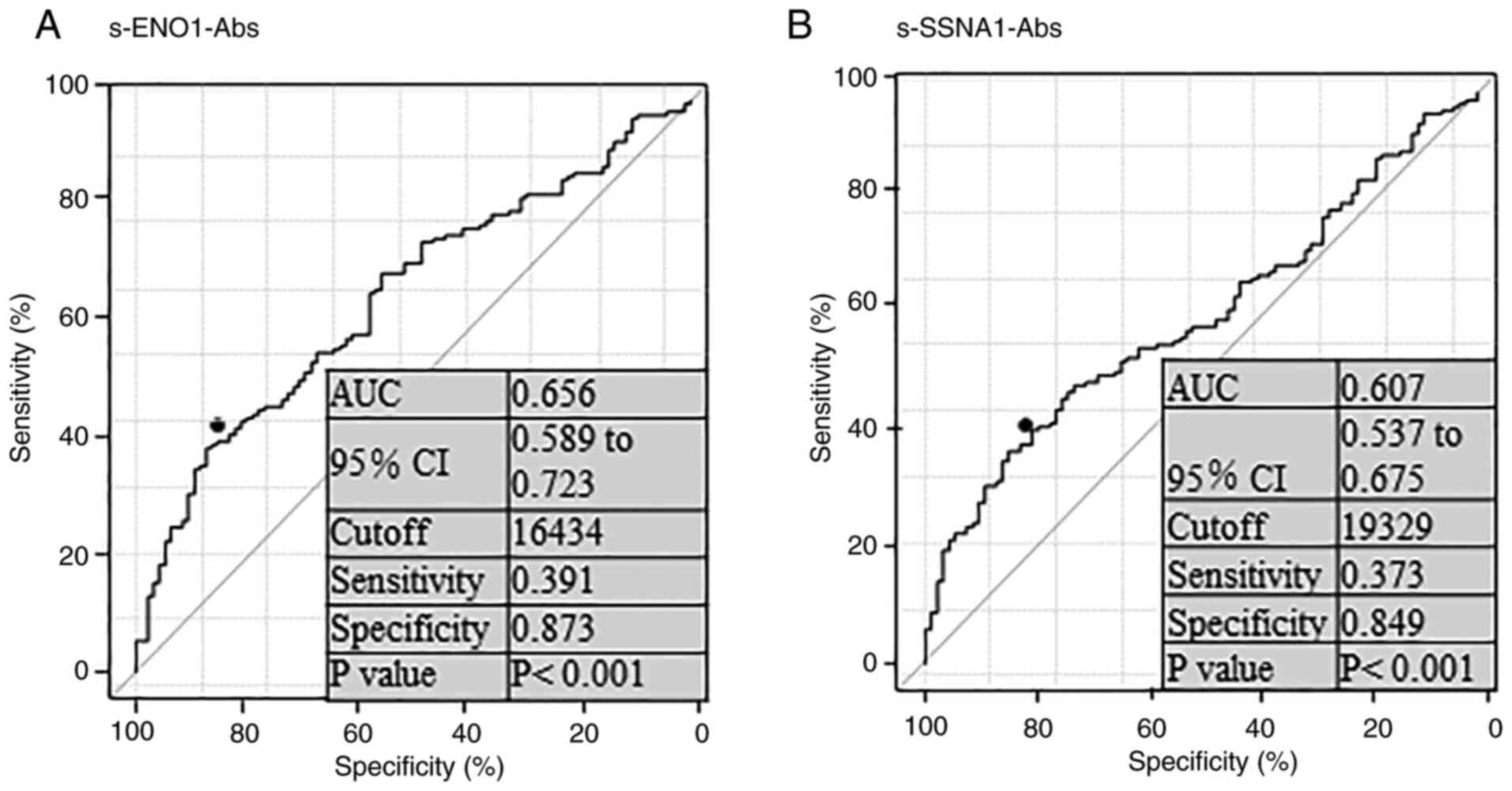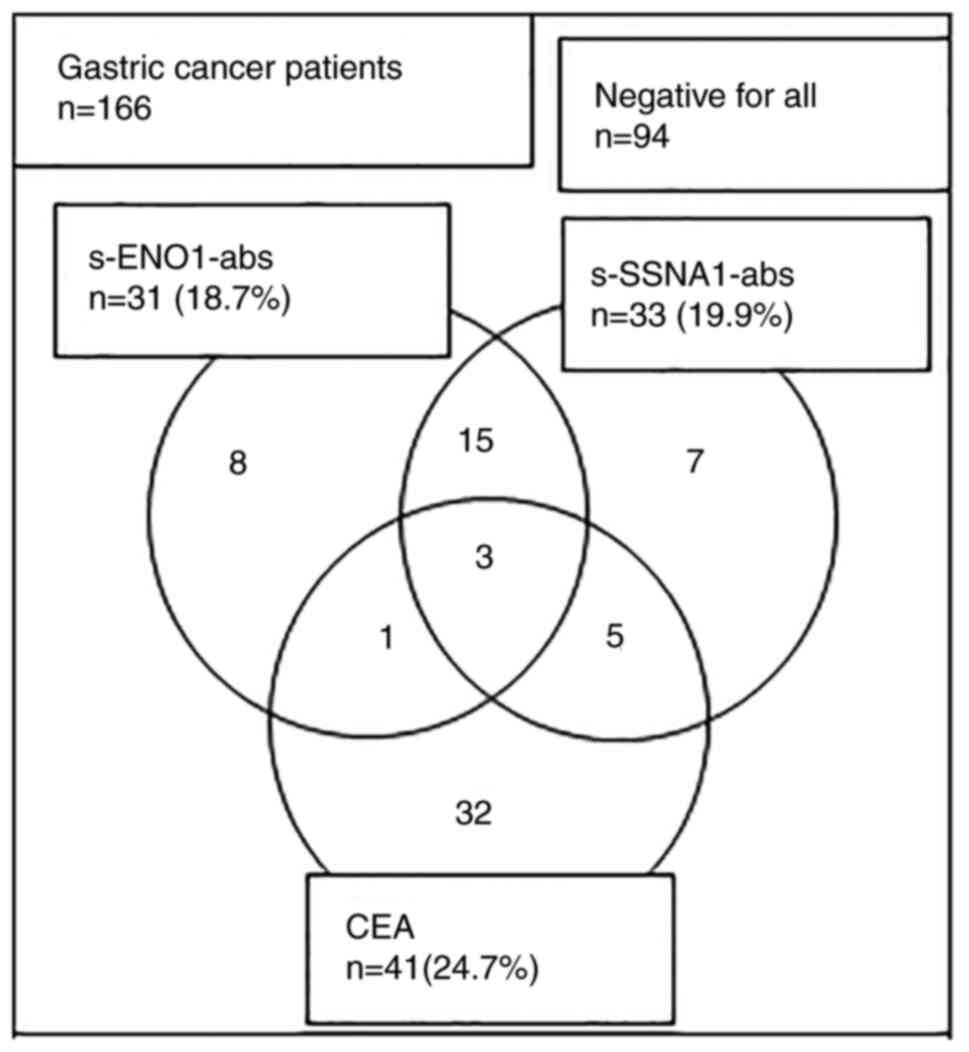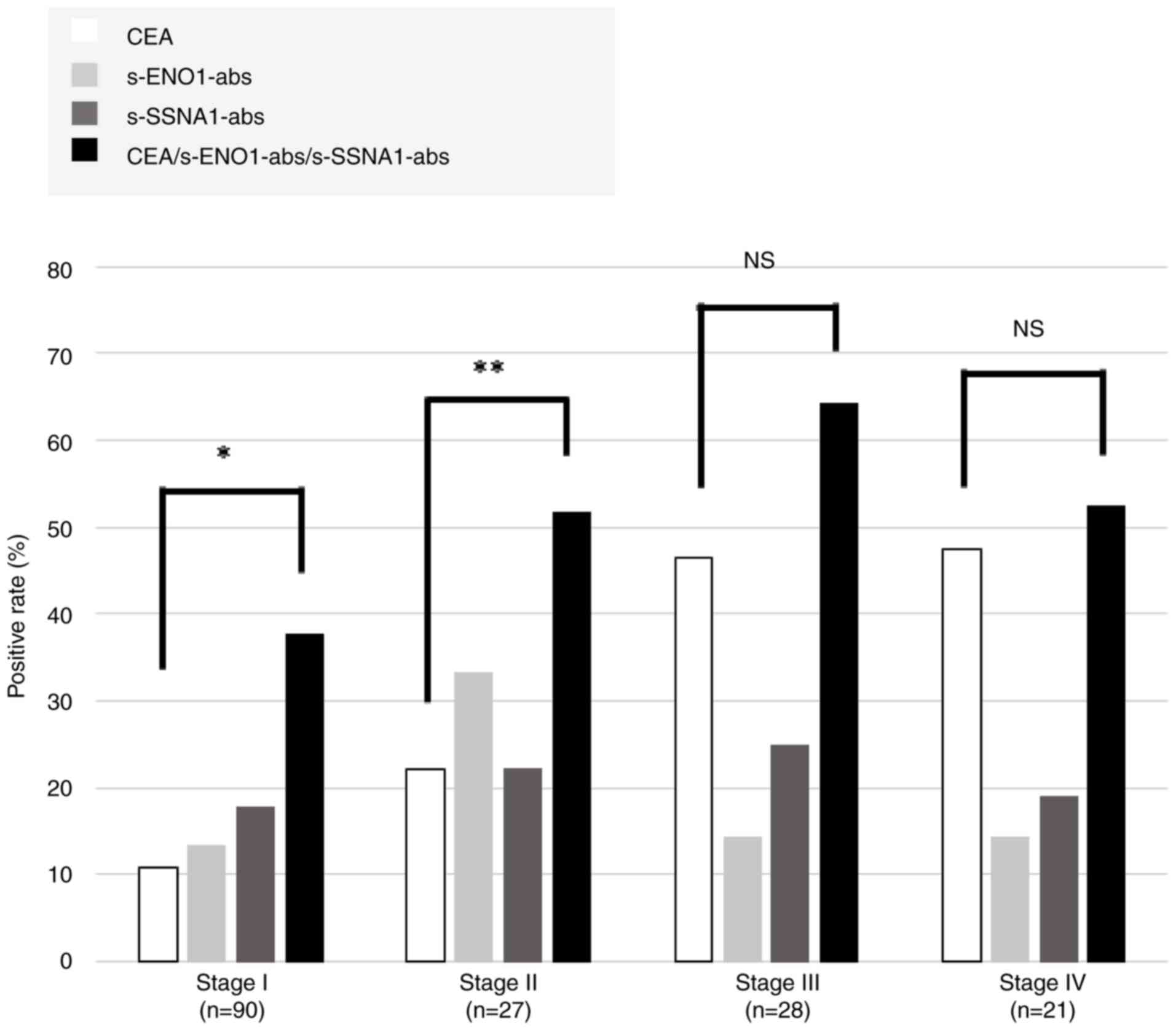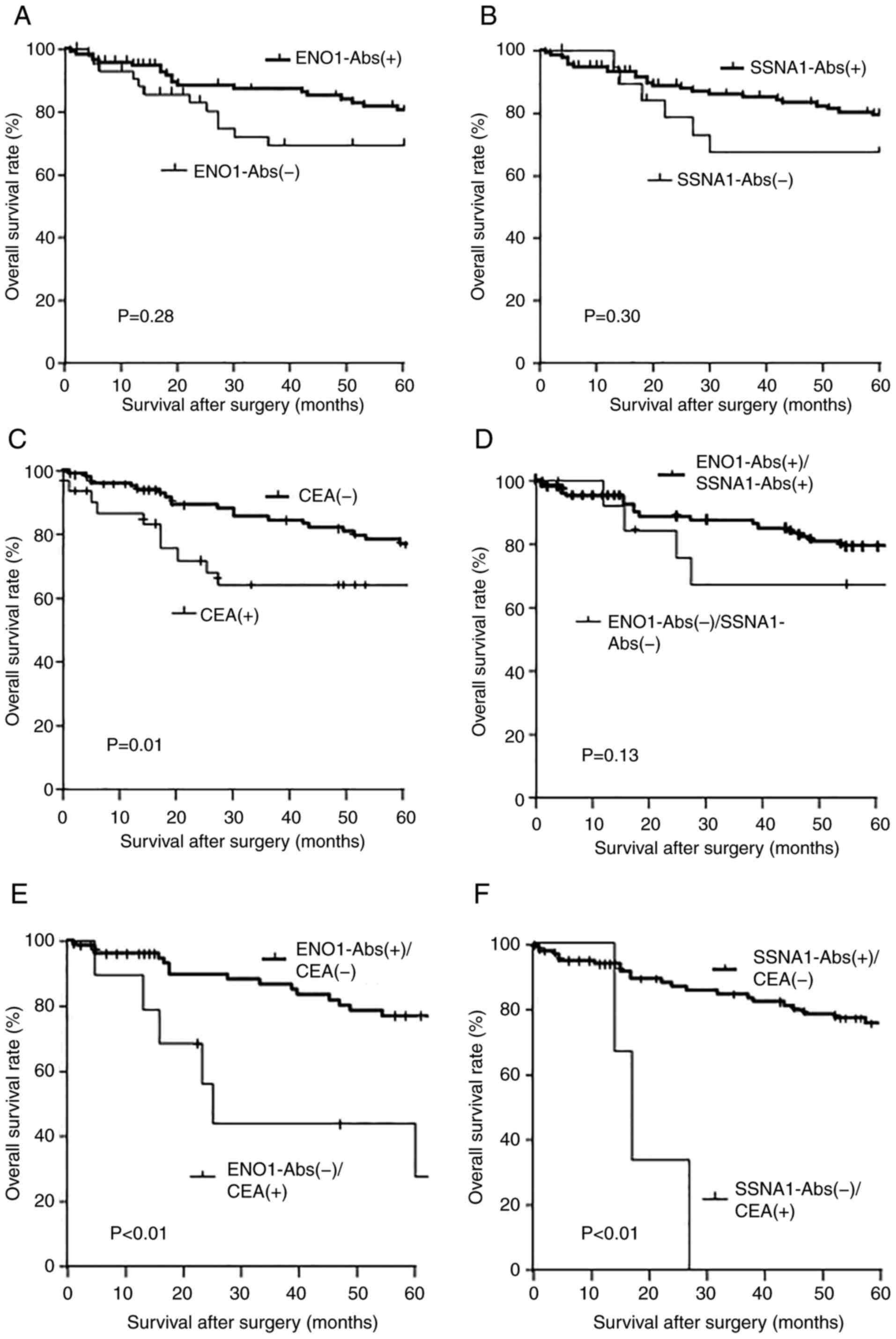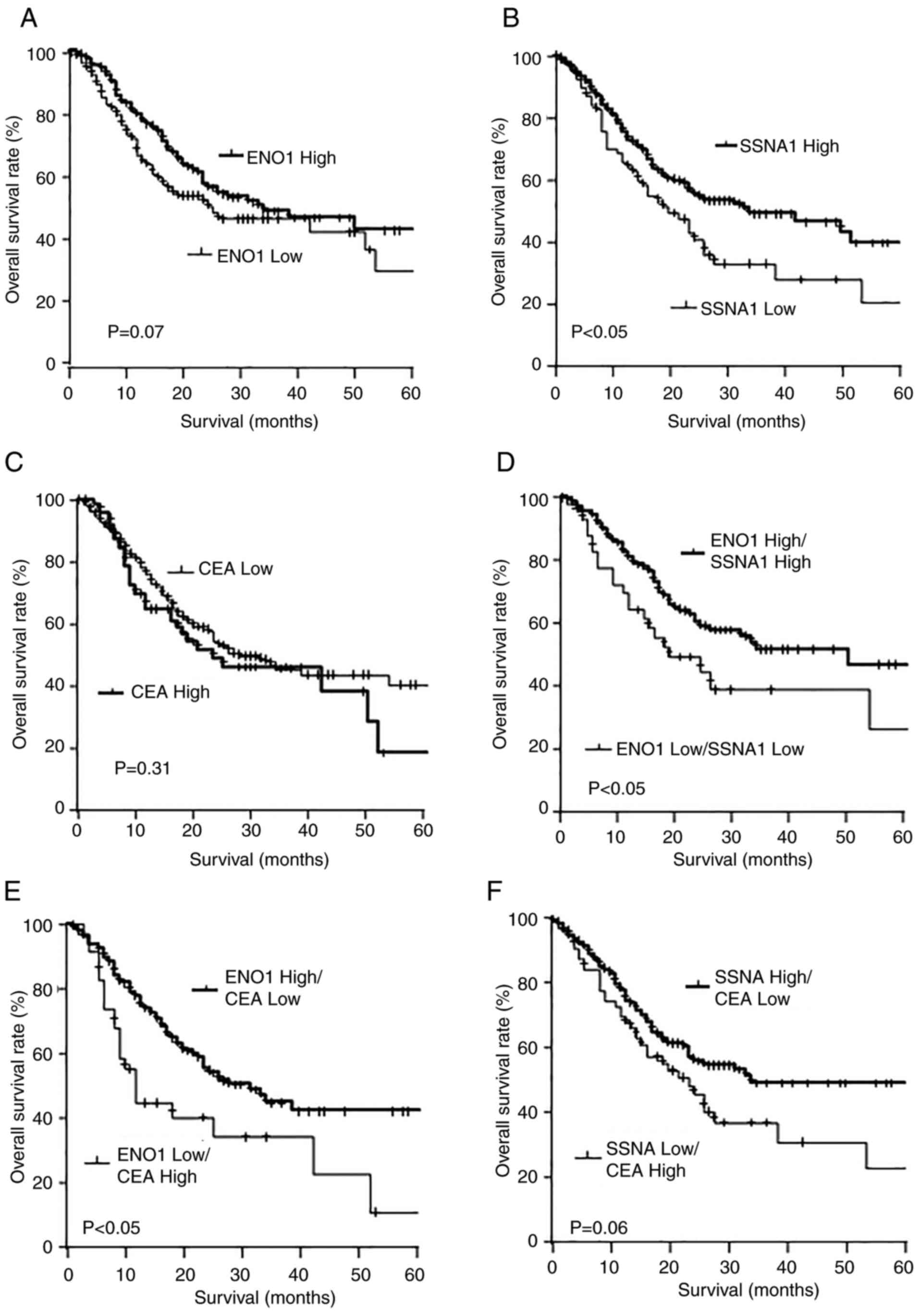|
1
|
Mamun TI, Younus S and Rahman MH: Gastric
cancer-Epidemiology, modifiable and non-modifiable risk factors,
challenges and opportunities: An updated review. Cancer Treat Res
Commun. 41:1008452024. View Article : Google Scholar : PubMed/NCBI
|
|
2
|
Ferlay J, Colombet M, Soerjomataram I,
Parkin DM, Piñeros M, Znaor A and Bray F: Cancer statistics for the
year 2020: An overview. Int J Cancer. 2021.(Epub ahead of print).
View Article : Google Scholar
|
|
3
|
Sung H, Ferlay J, Siegel RL, Laversanne M,
Soerjomataram I, Jemal A and Bray F: Global cancer statistics 2020:
GLOBOCAN estimates of incidence and mortality worldwide for 36
cancers in 185 countries. CA Cancer J Clin. 71:209–249. 2021.
View Article : Google Scholar : PubMed/NCBI
|
|
4
|
Jin Z, Jiang W and Wang L: Biomarkers for
gastric cancer: Progression in early diagnosis and prognosis
(Review). Oncol Lett. 9:1502–1508. 2015. View Article : Google Scholar : PubMed/NCBI
|
|
5
|
Nie Y, Zhao W, Lu L and Zhou F: Predictive
biomarkers and new developments of immunotherapy in gastric cancer:
A 2023 update. Am J Cancer Res. 13:3169–3184. 2023.PubMed/NCBI
|
|
6
|
Sasajima N, Sumazaki M, Oshima Y, Ito M,
Yajima S, Takizawa H, Wang H, Li SY, Zhang BS, Yoshida Y, et al:
Stage-specific alteration and prognostic relationship of serum
fumarate hydratase autoantibodies in gastric cancer. Int J Mol Sci.
25:54702024. View Article : Google Scholar : PubMed/NCBI
|
|
7
|
Heo CK, Bahk YY and Cho EW:
Tumor-associated autoantibodies as diagnostic and prognostic
biomarkers. BMB Rep. 45:677–685. 2012. View Article : Google Scholar : PubMed/NCBI
|
|
8
|
Montero-Calle A, Garranzo-Asensio M,
Moreno-Casbas MT, Campuzano S and Barderas R: Autoantibodies in
cancer: A systematic review of their clinical role in the most
prevalent cancers. Front Immunol. 15:14556022024. View Article : Google Scholar : PubMed/NCBI
|
|
9
|
Green HN: An immunological concept of
cancer: A preliminary report. Br Med J. 11:1374–1380. 1954.
View Article : Google Scholar : PubMed/NCBI
|
|
10
|
Zhong L, Coe SP, Stromberg AJ, Khattar NH,
Jett JR and Hirschowitz EA: Profiling tumor-associated antibodies
for early detection of non-small cell lung cancer. J Thorac Oncol.
1:513–519. 2006. View Article : Google Scholar : PubMed/NCBI
|
|
11
|
Hoshino I, Nagata M, Takiguchi N, Nabeya
Y, Ikeda A, Yokoi S, Kuwajima A, Tagawa M, Matsushita K, Satoshi Y
and Hideaki S: Panel of autoantibodies against multiple
tumor-associated antigens for detecting gastric cancer. Cancer Sci.
108:308–315. 2017. View Article : Google Scholar : PubMed/NCBI
|
|
12
|
Xu YW, Peng YH, Xu LY, Xie JJ and Li EM:
Autoantibodies: Potential clinical applications in early detection
of esophageal squamous cell carcinoma and esophagogastric junction
adenocarcinoma. World J Gastroenterol. 25:5049–5068. 2019.
View Article : Google Scholar : PubMed/NCBI
|
|
13
|
Nakashima K, Shimada H, Ochiai T,
Kuboshima M, Kuroiwa N, Okazumi S, Matsubara H, Nomura F, Takiguchi
M and Hiwasa T: Serological identification of TROP2 by recombinant
cDNA expression cloning using sera of patients with esophageal
squamous cell carcinoma. Int J Cancer. 112:1029–1035. 2004.
View Article : Google Scholar : PubMed/NCBI
|
|
14
|
Shimada H, Nakashima K, Ochiai T, Nabeya
Y, Takiguchi M, Nomura F and Hiwasa T: Serological identification
of tumor antigens of esophageal squamous cell carcinoma. Int J
Oncol. 26:77–86. 2005.PubMed/NCBI
|
|
15
|
Niloofa R, De Zoysa MI and Seneviratne LS:
Autoantibodies in the diagnosis, prognosis, and prediction of
colorectal cancer. J Cancer Res Ther. 17:819–833. 2021. View Article : Google Scholar : PubMed/NCBI
|
|
16
|
Dai L, Tsay JC, Li J, Yie TA, Munger JS,
Pass H, Rom WN, Zhang Y, Tan EM and Zhang JY: Autoantibodies
against tumor-associated antigens in the early detection of lung
cancer. Lung Cancer. 99:172–179. 2016. View Article : Google Scholar : PubMed/NCBI
|
|
17
|
Shimada H, Takeda A, Arima M, Okazumi S,
Matsubara H, Nabeya Y, Funami Y, Hayashi H, Gunji Y, Suzuki T, et
al: Serum p53 antibody is a useful tumor marker in superficial
esophageal squamous cell carcinoma. Cancer. 89:1677–1683. 2000.
View Article : Google Scholar : PubMed/NCBI
|
|
18
|
Oshima Y, Suzuki T, Yajima S, Nanami T,
Shiratori F, Funahashi K and Shimada H: Serum p53 antibody: Useful
for detecting gastric cancer but not for predicting prognosis after
surgery. Surg Today. 50:1402–1408. 2020. View Article : Google Scholar : PubMed/NCBI
|
|
19
|
Zhang BS, Zhang XM, Ito M, Yajima S,
Yoshida K, Ohno M, Nishi E, Wang H, Li SY, Kubota M, et al: JMJD6
autoantibodies as a potential biomarker for inflammation-related
diseases. Int J Mol Sci. 25:49352024. View Article : Google Scholar : PubMed/NCBI
|
|
20
|
Kuboshima M, Shimada H, Liu TL, Nakashima
K, Nomura F, Takiguchi M, Hiwasa T and Ochiai T: Identification of
a novel SEREX antigen, SLC2A1/GLUT1, in esophageal squamous cell
carcinoma. Int J Oncol. 28:463–468. 2006.PubMed/NCBI
|
|
21
|
Kobayashi S, Hiwasa T, Ishige T, Kano M,
Hoshino T, Rahmutulla B, Seimiya M, Shimada H, Nomura F, Matsubara
H, et al: Anti-FIRΔexon2 autoantibody as a novel indicator for
better overall survival in gastric cancer. Cancer Sci. 112:847–858.
2021. View Article : Google Scholar : PubMed/NCBI
|
|
22
|
Beaudet L, Rodriguez-Suarez R, Venne MH,
Caron M, Bédard J, Brechler V, Parent S and Bielefeld-Sévigny M:
AlphaLISA immunoassays: The no-wash alternative to ELISAs for
research and drug discovery. Nat Methods. 5:an8–an9. 2008.
View Article : Google Scholar
|
|
23
|
Hiwasa T, Wang H, Goto K, Mine S, Machida
T, Kobayashi E, Yoshida Y, Adachi A, Matsutani T, Sata M, et al:
Serum anti-DIDO1, anti-CPSF2, and anti-FOXJ2 antibodies as
predictive risk markers for acute ischemic stroke. BMC Med.
19:1312021. View Article : Google Scholar : PubMed/NCBI
|
|
24
|
Ito M, Yajima S, Suzuki T, Oshima Y,
Nanami T, Sumazaki M, Shiratori F, Takizawa H, Li SY, Zhang BS, et
al: Combination of high anti-SKI and low anti-TMED5 antibody levels
is preferable prognostic factor in esophageal carcinoma. Cancer
Sci. 115:2209–2219. 2024. View Article : Google Scholar : PubMed/NCBI
|
|
25
|
Shimada H, Noie T, Ohashi M, Oba K and
Takahashi Y: Clinical significance of serum tumor markers for
gastric cancer: A systematic review of literature by the Task Force
of the Japanese gastric cancer association. Gastric Cancer.
17:26–33. 2014. View Article : Google Scholar : PubMed/NCBI
|
|
26
|
Camp RL, Dolled-Filhart M and Rimm DL:
X-tile: A new bio-informatics tool for biomarker assessment and
outcome-based cut-point optimization. Clin Cancer Res.
10:7252–7259. 2004. View Article : Google Scholar : PubMed/NCBI
|
|
27
|
Kanda Y: Investigation of the freely
available easy-to-use software ‘EZR’ for medical statistics. Bone
Marrow Transplant. 48:452–458. 2013. View Article : Google Scholar : PubMed/NCBI
|
|
28
|
June CH, Warshauer JT and Bluestone JA: Is
autoimmunity the Achilles' heel of cancer immunotherapy? Nat Med.
23:540–547. 2017. View Article : Google Scholar : PubMed/NCBI
|
|
29
|
Tachibana M, Takemoto Y, Nakashima Y,
Kinugasa S, Kotoh T, Dhar DK, Kohno H and Nagasue N: Serum
carcinoembryonic antigen as a prognostic factor in resectable
gastric cancer. J Am Coll Surg. 187:64–68. 1998. View Article : Google Scholar : PubMed/NCBI
|
|
30
|
Kim JH, Jun KH, Jung H, Park IS and Chin
HM: Prognostic value of preoperative serum levels of five tumor
markers (carcinoembryonic antigen, CA19-9, alpha-fetoprotein,
CA72-4, and CA125) in gastric cancer. Hepatogastroenterology.
61:863–869. 2014.PubMed/NCBI
|
|
31
|
Qiao G, Wu A, Chen X, Tian Y and Lin X:
Enolase 1, a moonlighting protein, as a potential target for cancer
treatment. Int J Biol Sci. 17:3981–3992. 2021. View Article : Google Scholar : PubMed/NCBI
|
|
32
|
Li HJ, Ke FY, Lin CC, Lu MY, Kuo YH, Wang
YP, Liang KH, Lin SC, Chang YH, Chen HY, et al: ENO1 promotes lung
cancer metastasis via HGFR and WNT signaling-driven
epithelial-to-mesenchymal transition. Cancer Res. 81:4094–4109.
2021. View Article : Google Scholar : PubMed/NCBI
|
|
33
|
Cappello P, Tonoli E, Curto R, Giordano D,
Giovarelli M and Novelli F: Anti-α-enolase antibody limits the
invasion of myeloid-derived suppressor cells and attenuates their
restraining effector T cell response. Oncoimmunology.
5:e11129402015. View Article : Google Scholar : PubMed/NCBI
|
|
34
|
Wang N, Qiao H, Hao J, Deng C, Zhou N,
Yang L, Zeng M and Guan Q: RNA-binding protein ENO1 promotes the
tumor progression of gastric cancer by binding to and regulating
gastric cancer-related genes. J Gastrointest Oncol. 14:585–598.
2023. View Article : Google Scholar : PubMed/NCBI
|
|
35
|
Deng K, Yang L, Hu B, Wu H, Zhu H and Tang
C: The prognostic significance of pretreatment serum CEA levels in
gastric cancer: A meta-analysis including 14651 patients. PLoS One.
10:e01241512015. View Article : Google Scholar : PubMed/NCBI
|
|
36
|
Evans RL, Pottala JV, Nagata S and Egland
KA: Longitudinal autoantibody responses against tumor-associated
antigens decrease in breast cancer patients according to treatment
modality. BMC Cancer. 18:1192018. View Article : Google Scholar : PubMed/NCBI
|
|
37
|
Wang C, Xi W, Ji J, Cai Q, Zhao Q, Jiang
J, Zhou C, Shi M, Zhang H, Zhu Z and Zhang J: The prognostic value
of HGF-c-MET signaling pathway in gastric cancer: A study based on
TCGA and GEO databases. Int J Med Sci. 17:1946–1955. 2020.
View Article : Google Scholar : PubMed/NCBI
|
|
38
|
Qiao H, Wang Y, Zhu B, Jiang L, Yuan W,
Zhou Y and Guan Q: Enolase1 overexpression regulates the growth of
gastric cancer cells and predicts poor survival. J Cell Biochem.
120:18714–18723. 2019. View Article : Google Scholar : PubMed/NCBI
|
|
39
|
Yang T, Shu X, Zhang HW, Sun LX, Yu L, Liu
J, Sun LC, Yang ZH and Ran YL: Enolase 1 regulates stem cell-like
properties in gastric cancer cells by stimulating glycolysis. Cell
Death Dis. 11:8702020. View Article : Google Scholar : PubMed/NCBI
|
|
40
|
Cecchi F, Rabe DC and Bottaro DP:
Targeting the HGF/Met signalling pathway in cancer. Eur J Cancer.
46:1260–1270. 2010. View Article : Google Scholar : PubMed/NCBI
|
|
41
|
Koh SA and Lee KH: HGF-mediated S100A11
overexpression enhances proliferation and invasion of gastric
cancer. Am J Transl Res. 10:3385–3394. 2018.PubMed/NCBI
|
|
42
|
Lawrence EJ, Arpag G, Arnaiz C and Zanic
M: SSNA1 stabilizes dynamic microtubules and detects microtubule
damage. Elife. 10:e672822021. View Article : Google Scholar : PubMed/NCBI
|
|
43
|
Basnet N, Nedozralova H, Crevenna AH,
Bodakuntla S, Schlichthaerle T, Taschner M, Cardone G, Janke C,
Jungmann R, Magiera MM, et al: Direct induction of microtubule
branching by microtubule nucleation factor SSNA1. Nat Cell Biol.
20:1172–1180. 2018. View Article : Google Scholar : PubMed/NCBI
|
|
44
|
Wu LW and Hu X: SSNA1 promotes
hepatocellular carcinoma metastasis via STAT3/EMT induction.
Anticancer Res. 43:3479–3486. 2023. View Article : Google Scholar : PubMed/NCBI
|
|
45
|
Platchek M, Lu Q, Tran H and Xie W:
Comparative analysis of multiple immunoassays for cytokine
profiling in drug discovery. SLAS Discov. 25:1197–1213. 2020.
View Article : Google Scholar : PubMed/NCBI
|
|
46
|
Ye X, Xiong W, Xu X, Zeng J, Xie H, Li B,
He B, Chen L and Mo Q: Cost-benefit analysis of serological and
nucleic acid testing for hepatitis B virus in blood donors in
southern China. BMC Infect Dis. 24:9092024. View Article : Google Scholar : PubMed/NCBI
|















